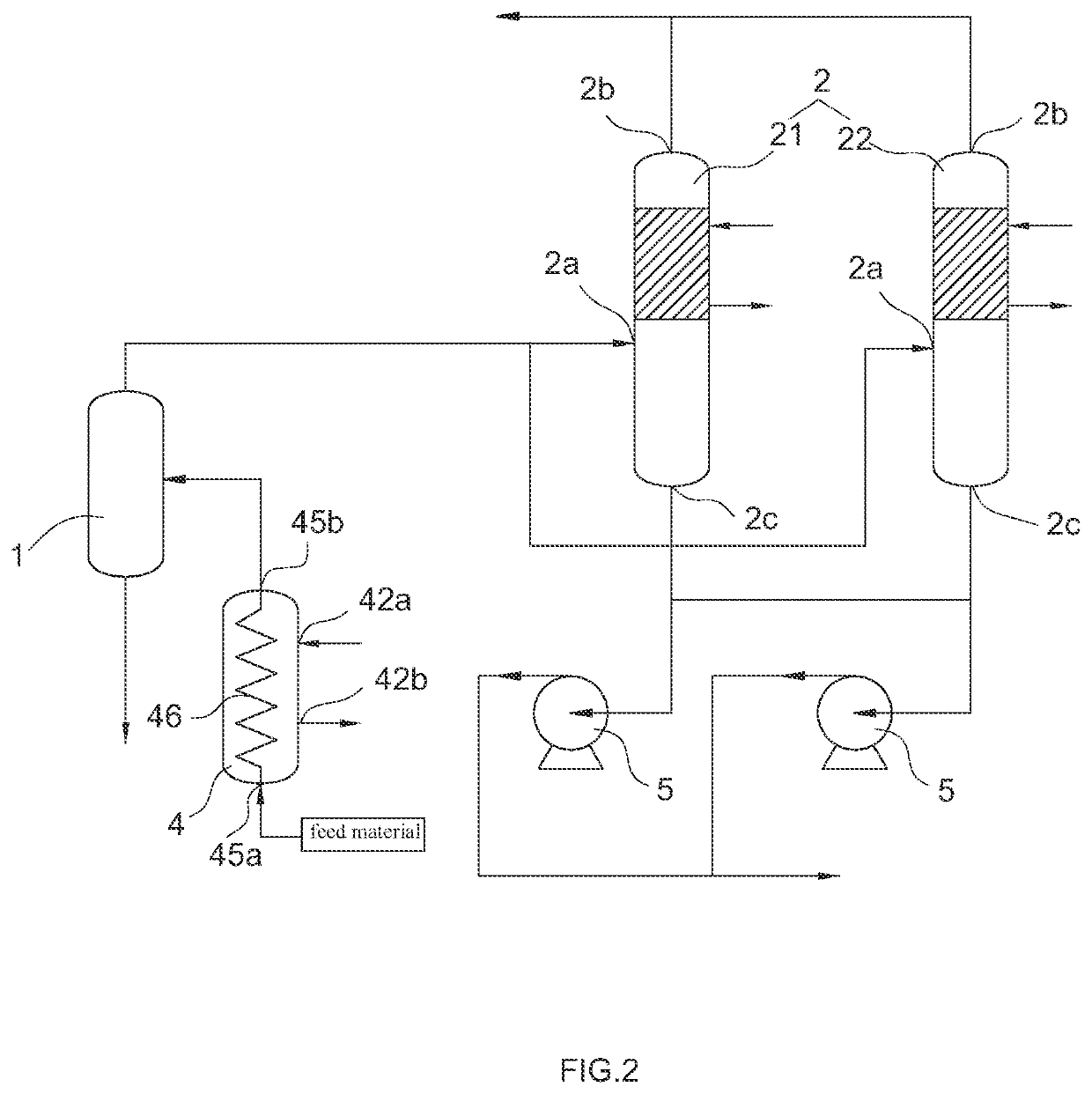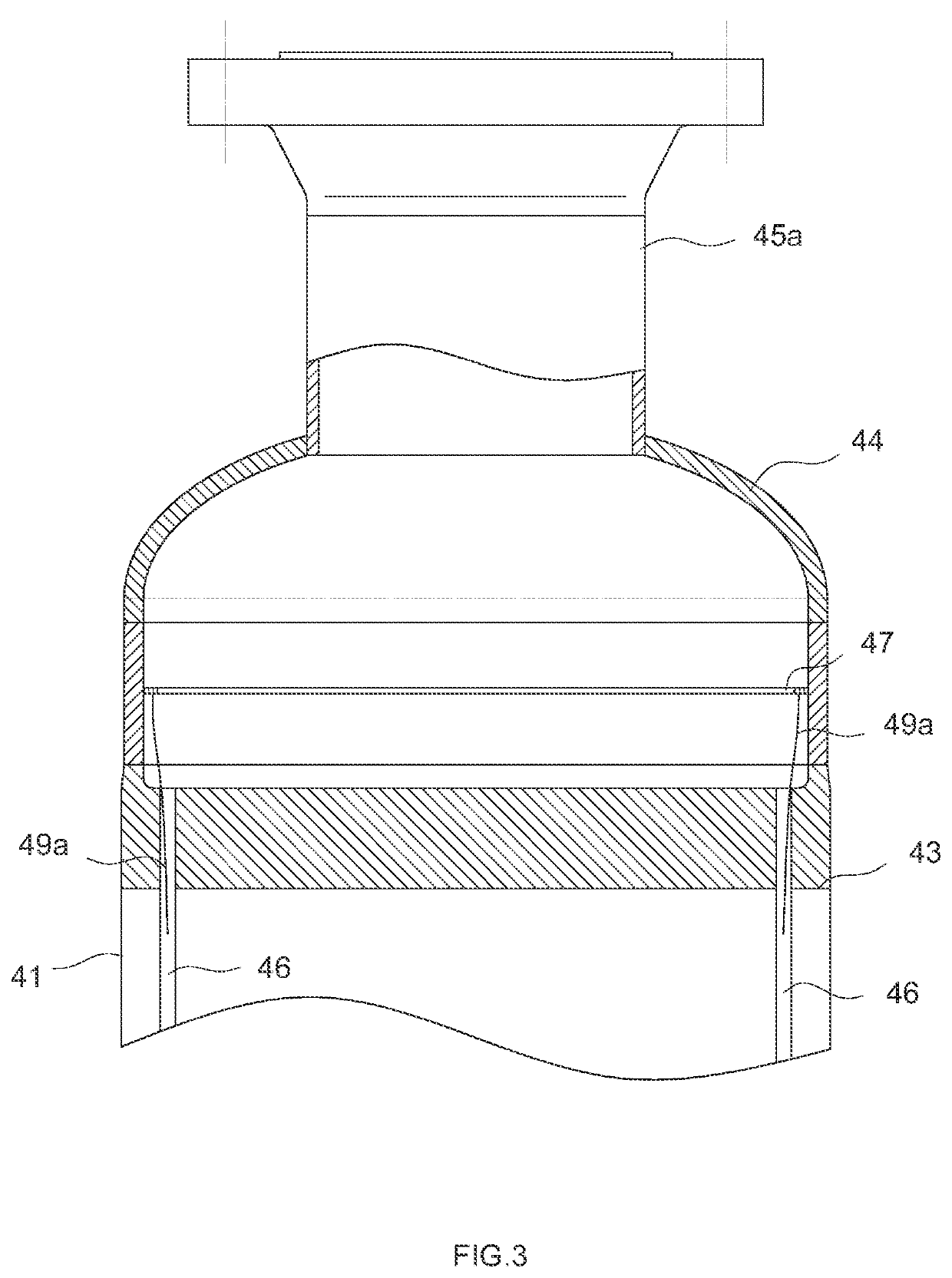Depolymerization System Having Coil-Wound Heat Exchanger
- Summary
- Abstract
- Description
- Claims
- Application Information
AI Technical Summary
Benefits of technology
Problems solved by technology
Method used
Image
Examples
embodiment 1
[0030]FIGS. 2-7 show a first preferred embodiment of a depolymerization system with a tube-wound heat exchanger according to the present invention. The depolymerization system comprises a heat exchange device for heating a material, having a material output; a gas-liquid separation device 1 having an inlet and a gas output, connected to the material output of the heat exchange device; and a depolymerization device 2 connected to the gas output of the gas-liquid separation device 1; the heat exchange device comprises at least one tube-wound heat exchanger 4.
[0031]Each tube-wound heat exchanger 4 comprises: a shell-pass cylinder 41 having two ends; a first shell-pass connecting tube 42a and a second shell-pass connecting tube 42b both connected to the shell-pass cylinder 41; a first tube plate 43 and a second tube plate both attached to the two ends of the shell-pass cylinder 41; a first tube box 44 having a tube-pass inlet connecting tube 45a disposed on the first tube plate 43; a se...
embodiment 2
[0041]FIG. 8 shows a second preferred embodiment of the depolymerization system according to the present invention. The depolymerization system is basically the same as that in Embodiment 1, the only difference is that the heat exchange device comprises at least two tube-wound heat exchangers 4 and the tube passages of the tube-wound heat exchangers 4 are connected in series or in parallel to each other, specifically:
[0042]The heat exchange device comprises a first tube-wound heat exchanger 401, a second tube-wound heat exchanger 402, and a third tube-wound heat exchanger 403; the tube passage of the first tube-wound heat exchanger 401 is connected in parallel to the tube passage of the second tube-wound heat exchanger 402, and the tube passage of the first tube-wound heat exchanger 401 and the tube passage of the second tube-wound heat exchanger 402 both receive the material and are connected to the inlet of the gas-liquid separation device 1; the tube passage of the third tube-wou...
embodiment 3
[0044]FIG. 9 shows a third preferred embodiment of the depolymerization system according to the present invention. The depolymerization system is basically the same as that in Embodiment 1, the only difference is that, the heat exchange device in this embodiment further comprises a tubular heat exchanger 3 (having the same structure as the tubular heat exchanger in the prior art) having a tube passage for the material to pass through and a shell passage for a second heating medium to flow through; the tube passage of the tubular heat exchanger 3 is connected in series to the tube passage of the tube-wound heat exchanger 4, and the tube-pass inlet connecting tube 45a of the tube-wound heat exchanger 4 receives the material from the tube passage of the tubular heat exchanger 3. In this way, the material firstly enters the tube passage of the tubular heat exchanger 3 for primary heating, and then enters the tube passage of the tube-wound heat exchanger 4 for secondary heating.
[0045]Of ...
PUM
 Login to View More
Login to View More Abstract
Description
Claims
Application Information
 Login to View More
Login to View More - R&D
- Intellectual Property
- Life Sciences
- Materials
- Tech Scout
- Unparalleled Data Quality
- Higher Quality Content
- 60% Fewer Hallucinations
Browse by: Latest US Patents, China's latest patents, Technical Efficacy Thesaurus, Application Domain, Technology Topic, Popular Technical Reports.
© 2025 PatSnap. All rights reserved.Legal|Privacy policy|Modern Slavery Act Transparency Statement|Sitemap|About US| Contact US: help@patsnap.com



